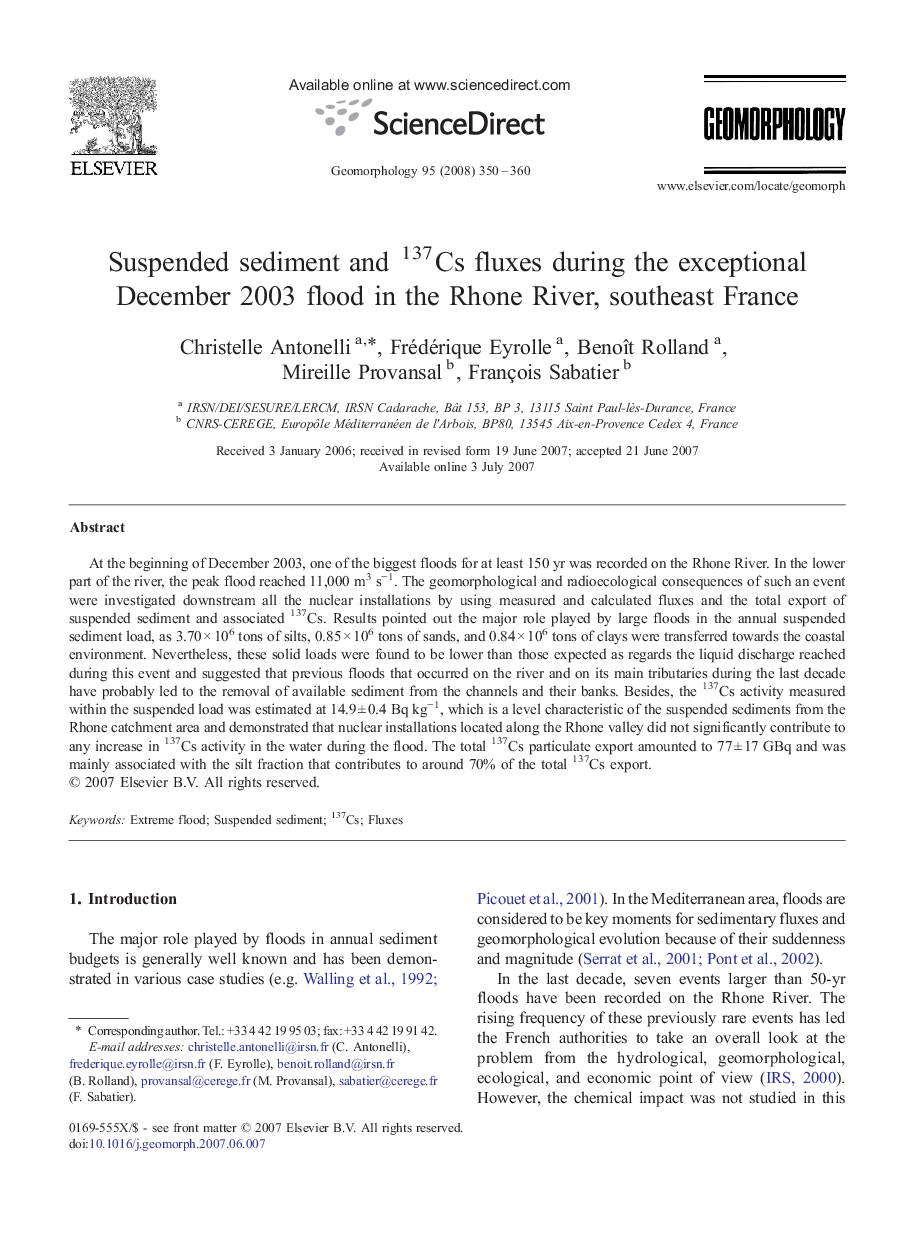| Article ID | Journal | Published Year | Pages | File Type |
|---|---|---|---|---|
| 4686871 | Geomorphology | 2008 | 11 Pages |
Abstract
At the beginning of December 2003, one of the biggest floods for at least 150 yr was recorded on the Rhone River. In the lower part of the river, the peak flood reached 11,000 m3 sâ1. The geomorphological and radioecological consequences of such an event were investigated downstream all the nuclear installations by using measured and calculated fluxes and the total export of suspended sediment and associated 137Cs. Results pointed out the major role played by large floods in the annual suspended sediment load, as 3.70 Ã 106 tons of silts, 0.85 Ã 106 tons of sands, and 0.84 Ã 106 tons of clays were transferred towards the coastal environment. Nevertheless, these solid loads were found to be lower than those expected as regards the liquid discharge reached during this event and suggested that previous floods that occurred on the river and on its main tributaries during the last decade have probably led to the removal of available sediment from the channels and their banks. Besides, the 137Cs activity measured within the suspended load was estimated at 14.9 ± 0.4 Bq kgâ1, which is a level characteristic of the suspended sediments from the Rhone catchment area and demonstrated that nuclear installations located along the Rhone valley did not significantly contribute to any increase in 137Cs activity in the water during the flood. The total 137Cs particulate export amounted to 77 ± 17 GBq and was mainly associated with the silt fraction that contributes to around 70% of the total 137Cs export.
Related Topics
Physical Sciences and Engineering
Earth and Planetary Sciences
Earth-Surface Processes
Authors
Christelle Antonelli, Frédérique Eyrolle, Benoît Rolland, Mireille Provansal, François Sabatier,
